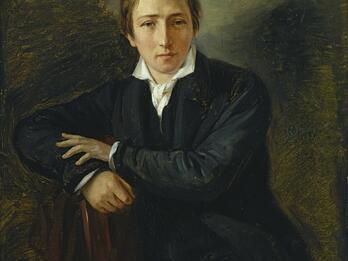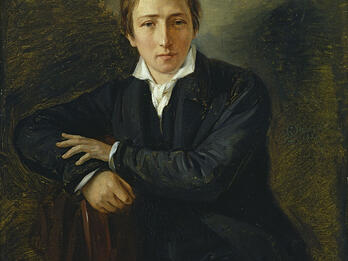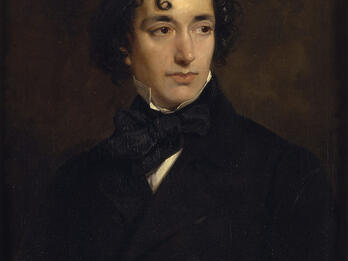The Tale of a Rabbi and His Only Son
Nachman of Bratslav
1815
Once there was a rabbi who had no children. Finally, he had an only son. He raised him and married him off. The son used to sit in an attic room and study in the manner of rich men and he always studied and prayed. The son had already performed a commandment by which he reached the aspect of “the small light.” And yet he felt that there was some…
Creator Bio
Nachman of Bratslav
Rabbi Nachman of Bratslav (or Breslov) was the great-grandson of the Ba‘al Shem Tov. As a young man, Nachman felt drawn to commune with God and reveled in the outdoors; his religious identity and antipathy toward other Hasidic leaders strengthened after his visit to the Land of Israel in 1798–1799. In 1802, he moved to Bratslav in Ukraine and attracted followers to a new, introspective form of Hasidism. He later settled in the town of Uman, leaving no successor after his death to lead Bratslav Hasidism. Rabbi Nathan Sternhartz, his disciple and amanuensis, published Nachman’s teachings. Nachman’s most significant writings are his Sipure ma’asiyot, fantasy tales with kabbalistic and folkloristic elements; and his Likute MoHaRaN, an anthology of his homiletic teachings.
Related Guide
Literature and Modernity
Jewish writing in the period spanning 1750–1880 reflects the profound changes that confronted Jews in modernity. Some writers self-consciously broke with traditional and religious models; others definitely embraced it.
Related Guide
Folk Tales and Fiction
The “return to history” of Jews in the eighteenth and nineteenth centuries and engagement between Jews and their majority cultures offered new models for imaginative writing beyond those within their ancestral traditions.
Related Guide
The Emergence of Hasidism
Hasidism, with its focus on pietism and spirituality, is one among the genuinely new forms of Jewish identity to develop in the period 1750–1880.
You may also like

A Seder Night

Portrait of Heinrich Heine
Vivian Grey

The Wondrous Tale of Alroy



